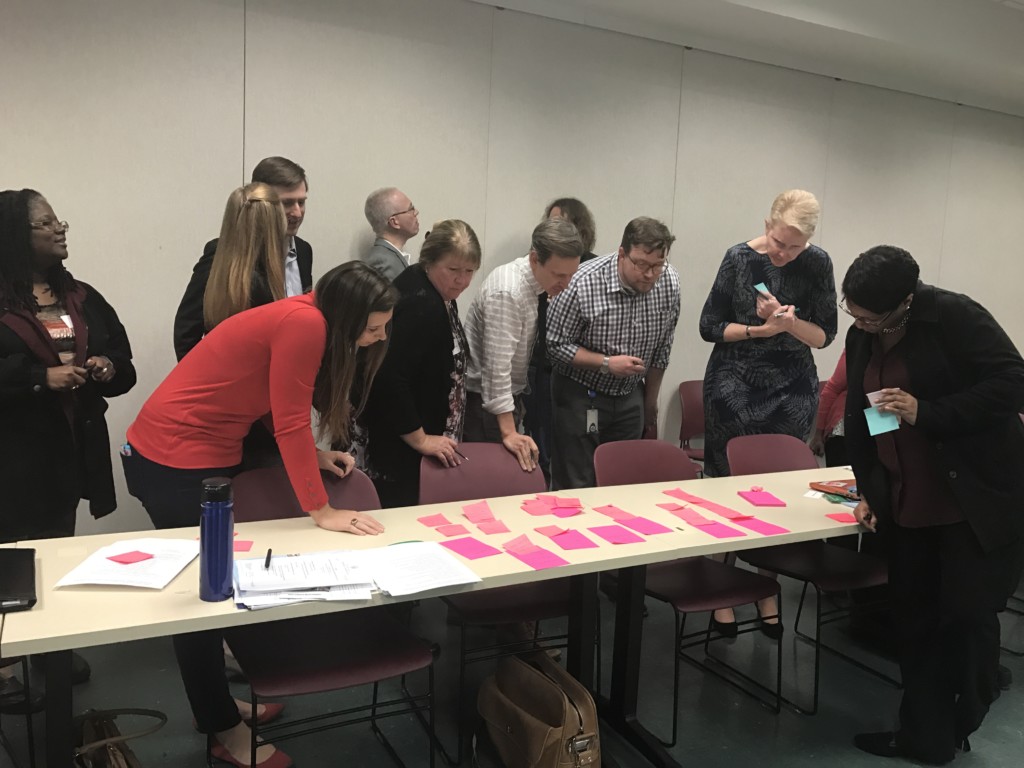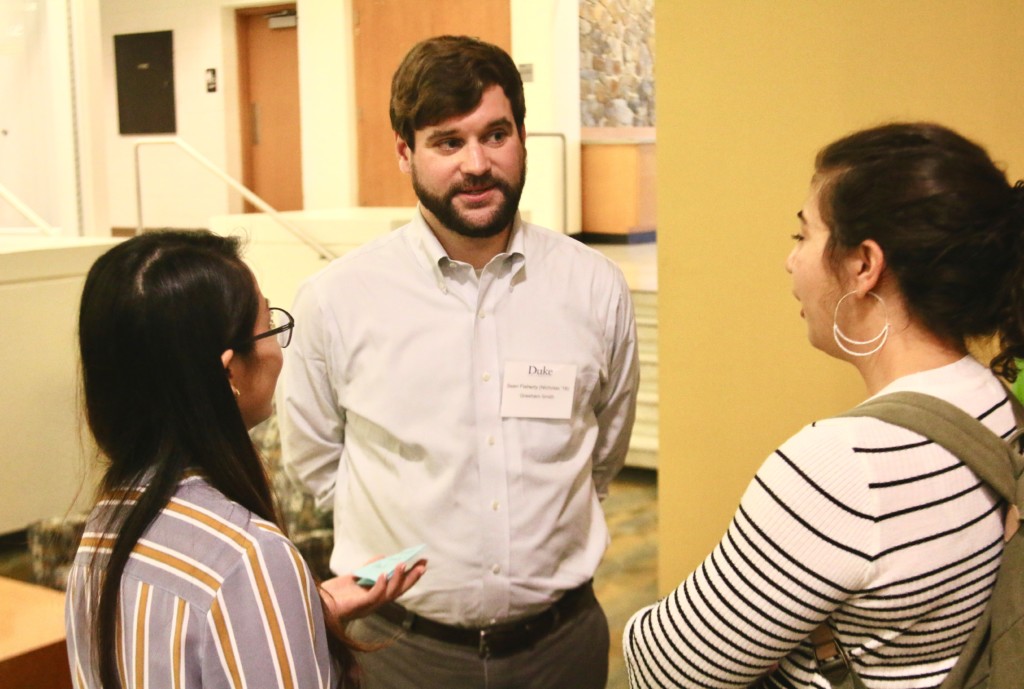With the outbreak of the COVID-19 pandemic and a recent rise in extreme weather events across the Southeast, we’re exploring the increasingly important topic of resiliency in the state of North Carolina with Transportation Planner Sean Flaherty and Elizabeth Albright, Ph.D., assistant professor of the practice, environmental science and policy methods at Duke University’s Nicholas School of the Environment. Albright is a leader in resiliency research, specifically as it relates to extreme climatic events and water resource management. Her work can be seen here.
Below are excerpts from their conversation, which covers the impact of COVID-19 on resiliency planning, what potential bright spots they see as well as a look ahead to the future of resiliency research.
How is the global pandemic going to affect local level ability to deal with resiliency and climate change in particular?
Albright: My number one concern is how the pandemic is going to affect local level capacity. Right now, both with COVID-19 and the stay-at-home orders, I’m really worried about local governments having the funds and administrative capacity to address resiliency and climate change. Locally, the emphasis has switched to COVID-19 management—whether it’s on healthcare, employment or stay-at-home policies—and rightfully so.
It’s my hope that we as a society don’t look at the pandemic and climate change as two separate issues. They’re interwoven. In North Carolina, we are seeing COVID-19 impact communities that are also disproportionally affected by the impacts of climate change, as well as a suite of environmental and health risks. I hope this pause and economic downturn will give an impetus to really think about and address the inequities that are in our society, which may then help address some of the inequities and disproportionate impact of climate change as well.
Flaherty: Right now, we’re monitoring things like improved air quality with fewer cars on the streets while residents are being asked to stay at home. That may be one of the biggest realizations from this current event. Through our transportation demand management work, where we are continuing our effort to help employers find new ways for their staff to get to work, we are looking to see if there are learning opportunities from this unique time. I also think more people are starting to see the importance of access to public space. Alternative modes are imperative to a resilient community and we’re seeing that now with the expedited increase in teleworking due to COVID-19. In the broader discussion of resiliency, access to public transit and other modes are equally, if not more critical, when considering the expected increase of extreme weather events.

Caption: Gresham Smith facilities the implementation of North Carolina’s Transportation Demand Management Program to reduce congestion and improve air quality across the state.
What’s on your mind right now?
Albright: Communities in the eastern part of the state still haven’t received Hurricane Florence recovery funds from the federal government. It’s been a year and a half since the storm hit. I’m concerned long-term that recovery funds from the federal government are going to become slower and slower and harder and harder to get as we see more and more extreme events happening. I think North Carolina needs to think about what funds they can use to address these core issues. In the long-term, it will save the state money. It will be costly in the short-term, but we can’t continue on this cycle.
Flaherty: Resiliency is the longer play. It’s bigger than just recovering from a single disaster. In a state that’s developing as quickly as North Carolina, there are great opportunities to address growth with sustainability as a top priority for secure investments both for the private and public sectors. Hopefully, this will accelerate those conversations. I’m really concerned about our coastal areas. If there’s another natural disaster while something like this pandemic is happening, where will that leave us? We hope to begin work soon on NCDOT’s Strategic Corridors Master Planning, where we’re likely going to be looking at resiliency issues along U.S. 17 that runs along the east coast through communities like Wilmington and New Bern.
How do we pay for these longer-term improvements related to resiliency?
Albright: My research group has been thinking about different state-level funding mechanisms to help fund building resilience. One potential avenue to think about is gas prices. With gas prices at historic lows, could we get a consistent dedicated revenue stream for these resiliency issues and not just in times of disaster when the state gets together to provide short-term help? States are using different funding mechanisms to fund disaster recovery, For instance, Indiana has a tax on fireworks that goes to a particular fund to deal with disasters. We’re all going to have to think creatively about coming up with a revenue stream that’s not tied to one particular disaster to build overall resilience for a whole array of events.
Flaherty: Vehicle-miles traveled tax could be on the table in a few places. As our transportation options become less dependent on gas, we are looking at ways to generate revenue outside of the gas tax, which was already decreasing before the pandemic hit.
We’re working with GoTriangle in the Raleigh-Durham area on transportation demand management. It looks like the federal government is going to provide some pilot project funding to explore creative congestion management practices. Manhattan is doing this with a congestion charge of up to $2.75 for a privately owned vehicle and $0.75 fee per rider for each ride-share trip. In New York, you’re taxed when you go into the island. Miles driven could be monitored in the future, and that’s part of the smart cities discussion as we become even more digitally connected. There are also privacy issues. New York’s congestion pricing will be used to improve the MTA’s public transit operations. This is a current example of how communities can get creative with targeted revenue streams to tackle difficult issues.
We have recommended through our work with NCDOT that larger commercial business developments like the Research Triangle Park consider piloting similar congestion management mechanisms where traffic flow in-and-out of the district be monitored at key access points. This would allow us to better understand opportunities for a reduction in single-occupancy vehicle commutes and how we can improve local air quality.

Caption: Flaherty speaks with students during a Net Impact symposium at Duke in 2019.
What are some positives that you think might come out of this?
Albright: It’s hard to think about positives right now, but I hope this gives us an opportunity as a nation and as individual communities. Hopefully, this puts a spotlight on our failures, such as access to healthcare, infrastructure, longstanding social inequities and so on. I’m hopeful that collectively we’ll think about how can we make our community stronger and more equitable. Where do we need to really work? Who should have voice in those decisions? Through creative leadership, we’re seeing several governors and cities step up, and not necessarily in an easy political way.
For instance, I live in a very socioeconomically, age and racially diverse neighborhood in Durham, and because of the pandemic, we now have mutual aid networks of neighbors helping neighbors. We used to just have a neighborhood email list. It has helped us grow closer and think about building relationships in creative and new ways. Much of the disaster research shows that levels of community trust and strength of relationships and are driving forces to successful recovery.
Could public-private partnerships (PPPs) be a solution?
Flaherty: Generally speaking, PPPs have been very difficult to pull off. However, one of the biggest projects we will be supporting is Charlotte Gateway Station, the Grand Central Station of Charlotte. All of the light rail will converge here, and it will also house a new Amtrak station and other modes of mobility. We’re going to be handling the transit planning component. It’s an example of a PPP. The potential is just so exciting, which makes it a unique opportunity. Outside of these unique situations, no one has really quite figured out what the secret formula is for PPPs. I would hope that private industry can come to the table more easily now, understanding the importance of these types of partnerships for longer term resiliency in our communities, which in turn provide the same strengthening for private investment.
Albright: It has been interesting to watch the private sector step up during COVID-19, like small business that are manufacturing personal protective equipment, or craft distilleries that are switching over to producing disinfectant. It’s that creativity and willingness to think adaptively to what the current needs are in this context that gives me hope.
What’s the future of resiliency research?
Albright: What is resilience? What does it mean? It’s being overused at this point. We need to really think hard about what we mean when we use it.
The literature is replete with individual case studies, like Charleston did this or Savannah did that. There are fewer cross-case comparison. That’s a real shortcoming of the research. There are multiple drivers of resilience, and it’s hard to tease those out when looking at an individual community. We need to think about how a number of communities were impacted by an event and then try to figure out what mattered in their path forward.
One of the things I’m working on right now is developing a scraper to go online and download all policies and communications about COVID-19 at the county level. There are also different measures we could use for outcomes, be it public health or economic outcomes. If we’re successful, we’ll be able to figure out: Did the local policies matter? That’s a COVID-19 example, but we can think about that in other types of resiliency and what policies are being developed at the community level.